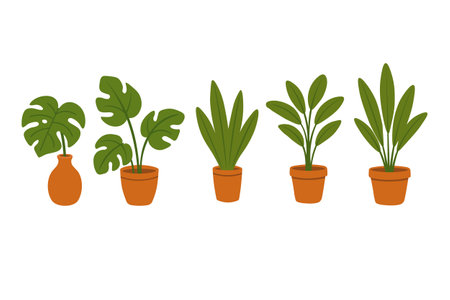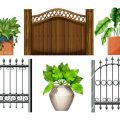Introduction to the British Cottage Garden
The British cottage garden stands as an enduring symbol of rural charm and natural beauty across the United Kingdom. This horticultural style, dating back to the 16th century, originally emerged from practical necessity—country dwellers cultivated a mix of flowers, herbs, fruit trees, and vegetables within small plots surrounding their cottages. Over time, this utilitarian approach evolved into a distinctive aesthetic celebrated for its informality, abundant planting, and harmonious blend of colours and textures.
Today, the quintessential British cottage garden is cherished for its ability to evoke nostalgia and tranquillity. It represents a careful balance between artful design and nature’s spontaneity—a tapestry of fragrant blooms, dense borders, and meandering pathways framed by weathered stone walls or picket fences. The appeal lies not only in the visual delight but also in its support for pollinators and local biodiversity. Cottage gardens remain a popular choice throughout the UK, appreciated for both their historical roots and adaptability to modern lifestyles.
| Feature | Description |
|---|---|
| Design Philosophy | Informal, layered planting with relaxed structure |
| Common Elements | Flowers, shrubs, fruit trees, herbs, climbers |
| Cultural Appeal | Nostalgic, wildlife-friendly, low-maintenance |
| Historical Origin | Practical gardens of rural cottagers (16th century onwards) |
Classic Cottage Garden Flowers
The quintessential British cottage garden is renowned for its charming, informal display of flowers that offer both colour and fragrance throughout the year. Selecting the right mix of traditional perennial and annual blooms ensures your garden remains vibrant in every season. Below is a guide to some of the most beloved and reliable cottage garden flowers, along with tips to achieve continuous interest.
Traditional Perennials for Enduring Beauty
| Flower | Season of Interest | Key Features | Care Tips |
|---|---|---|---|
| Delphinium | Late Spring to Summer | Tall spikes, blue or purple hues | Stake stems, cut back after flowering for a second flush |
| Lupin | Early to Mid-Summer | Bushy form, vibrant colours | Deadhead spent blooms, protect from slugs |
| Aquilegia (Columbine) | Spring to Early Summer | Nodding flowers, various colours | Allow self-seeding for natural spread |
| Peony | Late Spring to Early Summer | Large, fragrant blossoms | Support heavy heads, avoid waterlogging roots |
| Geranium (Cranesbill) | Late Spring to Autumn | Mound-forming, long-flowering period | Shear back after first flush for repeat blooms |
Cottage Annuals for Instant Impact
Annual flowers add bursts of colour and fill gaps between perennials. Consider sowing these classic varieties:
- Nigella (Love-in-a-Mist): Dainty blue or white flowers, self-seeds easily.
- Cosmos: Tall, feathery foliage with pink or white daisy-like blooms; ideal for late summer displays.
- Poppies: Breathtaking reds and oranges; allow seed heads to dry for natural reseeding.
- Sweet Peas: Scented climbers perfect for trellises; pick regularly to encourage more blooms.
- Cornflowers: Classic blue hues that attract pollinators and add a wildflower charm.
Tips for Year-Round Colour and Fragrance in Your Cottage Garden:
- Succession Planting: Layer bulbs, perennials, and annuals so something is always in bloom.
- Scented Choices: Incorporate lavender, sweet peas, and roses near paths and seating areas for maximum enjoyment.
- Diversity: Use a blend of flower shapes and heights to create depth and visual interest.
- Wildlife Friendly: Choose nectar-rich flowers like foxgloves and calendula to support bees and butterflies.
- Maintenance: Regular deadheading extends flowering periods while allowing some plants to self-seed keeps the look relaxed and natural.
A Note on Authenticity:
A true British cottage garden celebrates a harmonious mix of exuberant planting and practical ease. By choosing time-honoured favourites and embracing their informal growth habits, you will achieve a space that is both beautiful and deeply rooted in UK gardening tradition.

3. Essential Shrubs for Structure and Texture
In the quintessential British cottage garden, shrubs play a pivotal role in providing structural interest, year-round texture, and a sense of formality that underpins the more whimsical planting schemes. Selecting hardy varieties is key to ensuring longevity and resilience, particularly given the often unpredictable British weather. Below, we highlight several recommended shrubs renowned for their suitability in the UK climate, along with their primary attributes:
Shrub |
Key Features |
Seasonal Interest |
Notable Cultivars |
|---|---|---|---|
| Box (Buxus sempervirens) | Evergreen, dense foliage; excellent for hedging and topiary | Year-round structure; fresh green growth in spring | Suffruticosa, Green Gem |
| Hydrangea macrophylla | Large, showy flower heads; shade-tolerant | Summer blooms; autumn colour | Endless Summer, Nikko Blue |
| Lavender (Lavandula angustifolia) | Aromatic foliage; attracts pollinators | Summer flowers; evergreen presence in mild winters | Hidcote, Munstead |
| Philadelphus (Mock Orange) | Fragrant white blossoms; arching habit | Late spring to early summer blooms | Belle Etoile, Virginal |
| Rosa rugosa (Rugosa Rose) | Tough, disease-resistant; fragrant flowers and hips | Summer flowers; autumn rose hips for wildlife interest | Roseraie de l’Haÿ, Alba |
| Pyracantha (Firethorn) | Evergreen; spiny branches; vibrant berries | Spring blossom; autumn/winter berries for birds | Soleil dOr, Red Column |
| Daphne odora | Compact size; highly fragrant winter flowers | Late winter/early spring fragrance and colour | Aureomarginata |
The Legal and Practical Considerations When Planting Shrubs in Britain
Boundary Planting and Neighbour Relations:
When situating structural shrubs such as box or pyracantha near property boundaries, be mindful of the potential for overgrowth into neighbouring land. Under English law, you are responsible for keeping your plants within your own boundary. It is advisable to maintain regular pruning schedules and communicate openly with neighbours about hedge maintenance.
Sustainability and Wildlife Value:
Choosing native or well-adapted shrubs supports local biodiversity. For example, pyracantha provides vital winter food for birds, while lavenders attract bees. These selections not only ensure legal compliance with conservation objectives but also future-proof your garden against evolving climatic conditions.
Professional Recommendation: For optimal results in establishing the backbone of your cottage garden, combine evergreen stalwarts like box with seasonal stars such as hydrangeas and mock oranges. This strategy delivers year-round structure without sacrificing the romantic informality that defines British cottage gardens.
4. Trees That Complement the Cottage Style
Trees are fundamental to the traditional British cottage garden, providing essential structure, year-round interest, and a sense of permanence. Selecting the right trees not only adds height and shade but also enhances the garden’s character, blending seamlessly with classic cottage plantings. When choosing trees for your cottage garden, it is vital to consider their suitability for British soil and weather conditions, as well as their ultimate size and shape to ensure harmony with the surrounding landscape.
Advice on Selecting Trees
Opt for species that are well-adapted to the UK’s temperate climate, favouring varieties that offer ornamental value without overwhelming the space. Native and traditional trees are often preferred for their resilience and ecological benefits, attracting birds and beneficial insects while requiring less maintenance.
Recommended Tree Varieties for British Cottage Gardens
| Tree Variety | Main Features | Suitability |
|---|---|---|
| Crab Apple (Malus sylvestris) | Spring blossoms, autumn fruit, wildlife-friendly | Tolerates most soils, thrives in full sun or partial shade |
| Hawthorn (Crataegus monogyna) | White flowers in May, red berries, excellent hedge or specimen tree | Hardy in exposed sites, adaptable to various soil types |
| Silver Birch (Betula pendula) | Graceful form, attractive bark, light canopy allows underplanting | Prefers well-drained soils, good in both sun and partial shade |
| Lilac (Syringa vulgaris) | Scented spring flowers, manageable size for smaller gardens | Performs best in fertile, well-drained soils with sun exposure |
Practical Considerations
Ensure adequate spacing between trees to maintain airflow and allow sunlight to reach lower-growing plants. Avoid overly vigorous or large species that may overshadow delicate cottage flowers or disrupt established borders. Regular formative pruning will help maintain desirable shapes and encourage healthy growth.
Cultural Fit and Long-Term Value
The careful selection of trees tailored to British growing conditions not only provides aesthetic appeal but also supports native biodiversity and creates a timeless atmosphere reminiscent of classic English gardens. Incorporating a thoughtful mix of flowering and fruiting varieties ensures year-round interest while upholding the spirit of a true cottage retreat.
5. Planting Combinations and Layout Tips
Creating an authentic British cottage garden is as much about the artful arrangement of plants as it is about selecting suitable varieties. A successful layout balances structure with informality, ensuring that your garden appears natural yet thoughtfully curated. Here are practical guidelines for combining essential flowers, shrubs, and trees to achieve a charming, long-season display.
Designing for a Natural, Informal Look
Embrace irregularity—avoid rigid rows or formal symmetry. Instead, group plants in loose drifts and allow them to mingle. Taller species such as foxgloves and hollyhocks should be positioned towards the back of borders or along fences, while mid-height perennials like geraniums and salvias fill the central space. Low-growing ground covers such as lady’s mantle soften edges and pathways.
Recommended Plant Spacing
| Plant Type | Suggested Spacing (cm) | Notes |
|---|---|---|
| Annuals & Biennials | 20–30 | Sow in clusters for spontaneity |
| Perennials | 30–45 | Allow room to mature and self-seed |
| Shrubs | 60–150+ | Stagger for layered effect; avoid straight lines |
| Trees (Small/Ornamental) | 200+ | Position as focal points or boundary markers |
Succession Planting for Year-Round Interest
A classic cottage garden shines across the seasons. Plan for continuous colour by mixing early spring bulbs (such as daffodils and tulips) with summer-flowering perennials (like delphiniums and roses) and autumn highlights (asters, sedum). Interplant evergreen shrubs and winter-interest plants—such as mahonia or dogwood—for structure during colder months.
Companion Choices Favoured in the UK
Certain combinations are particularly popular among British gardeners for both aesthetics and plant health:
- Roses & Lavender: Lavender deters aphids and enhances the visual impact of traditional English roses.
- Foxgloves & Ferns: Both thrive in partial shade, providing vertical interest and lush foliage contrast.
- Aquilegia & Hardy Geraniums: These offer overlapping bloom times and create a soft understorey beneath taller specimens.
- Dahlias & Ornamental Grasses: Grasses provide movement and a naturalistic backdrop to bold dahlia blooms.
Final Practical Tips
Avoid overcrowding at planting time—even if gaps seem unsightly initially, most cottage garden favourites will quickly fill out. Mulch generously to suppress weeds and retain moisture. Regularly assess your layout each season; embrace self-seeded surprises but thin out where necessary to maintain balance. By following these guidelines, you’ll foster a thriving British cottage garden that feels both spontaneous and expertly composed.
6. Maintenance and Sustainable Gardening Practices
The enduring charm of a British cottage garden lies not only in its lush plantings but also in the thoughtful care that sustains it. Adopting low-impact maintenance strategies, fostering pollinator-friendly environments, and embracing eco-friendly methods are essential for upholding both tradition and modern sustainability.
Low-Impact Maintenance Strategies
British cottage gardens benefit from a gentle approach to upkeep, prioritising minimal intervention and natural processes. Consider the following strategies for effective yet sustainable maintenance:
Strategy |
Benefits |
|---|---|
Mulching with Organic Matter |
Retains soil moisture, suppresses weeds, and improves soil health without chemical input. |
Hand Weeding |
Reduces reliance on herbicides and preserves beneficial insects and microorganisms. |
Rainwater Harvesting |
Lowers water consumption and supports plants with naturally soft water, ideal for British flora. |
No-Dig Beds |
Maintains soil structure, encourages earthworms, and reduces erosion. |
Encouraging Pollinators
A thriving cottage garden supports local wildlife, particularly vital pollinators such as bees, butterflies, and hoverflies. Integrate these practices to create a pollinator haven:
- Plant native wildflowers like foxgloves (Digitalis purpurea) and cowslips (Primula veris) to provide year-round nectar sources.
- Avoid pesticides; opt for biological controls or companion planting to manage pests naturally.
- Incorporate flowering shrubs such as buddleia and lavender, which attract a variety of pollinators.
- Create undisturbed areas—such as log piles or wild corners—for nesting and overwintering insects.
Modern Eco-Friendly British Gardening Methods
Maintaining the traditional look of a cottage garden can be harmonised with contemporary environmental principles. Embrace these modern approaches:
- Select peat-free composts to reduce environmental impact and protect British peatlands.
- Choose disease-resistant plant varieties to minimise chemical treatments while maintaining heritage aesthetics.
- Practise crop rotation in kitchen garden sections to preserve soil fertility naturally.
- Utilise locally sourced materials for paths, edging, and structures to lower your carbon footprint.
Sustaining a cottage garden in the UK today means blending time-honoured techniques with mindful stewardship of local ecosystems. By applying these maintenance strategies, gardeners ensure that their green sanctuaries remain vibrant, resilient, and welcoming for generations—both human and wild alike.


